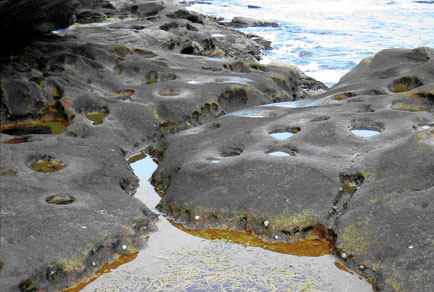Abstract
Zeacumantus subcarinatus is an endemic New Zealand gastropod which was first collected in the Sydney region in 1924. Although records have been maintained on the Australian Museum Database, there has been no formal assessment of its distribution and abundance since then. We undertook timed searches for this invader in 32 locations in the Sydney Region in Autumn 2004. It was present in nine locations, including one not previously recorded—Umina in Broken Bay. Further, Z. subcarinatus had disappeared from eight locations from which it had previously been reported. Population sizes were generally small, with the exception of Kurnell (Botany Bay), with an estimated >10,000 individuals. Comparisons of mobile and sessile fauna in pools confirmed that pools with the introduced gastropod were different from those lacking it, although there was considerable overlap in the ordination (nMDS) plots. Densities of littorinids (predominantly Austrolittorina unifasciata but also Afrolittorina acutispira) were three-fold lower when Z. subcarinatus was present in the pool. Zeacumantus subcarinatus is now present in the four major estuarine systems in the Sydney region and this may allow it to spread to additional locations within these systems. Management, such as manual removal, does not appear to be necessary at this stage, but we recommend a periodic re-examination of its distribution and abundance.

